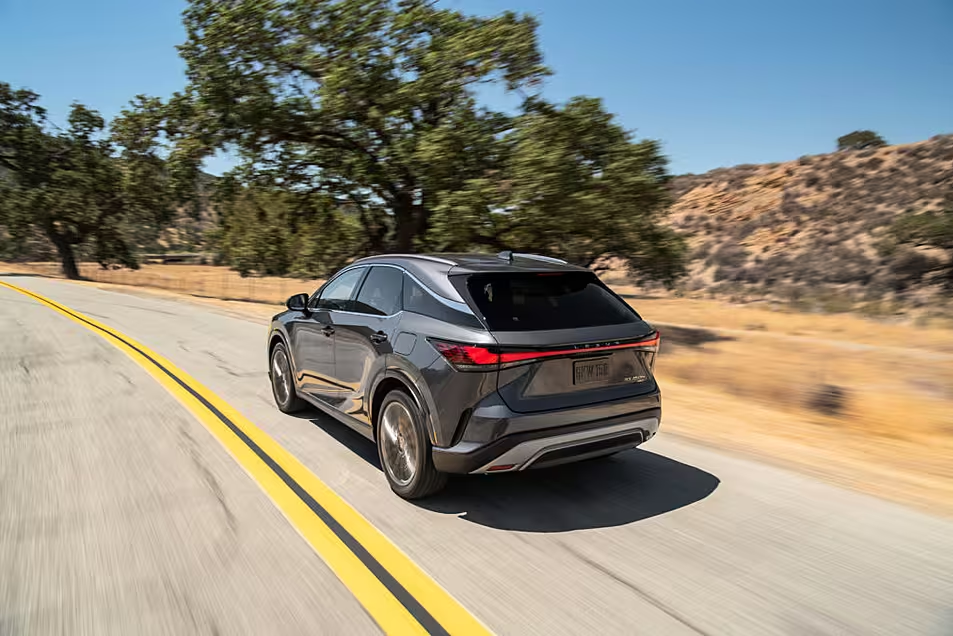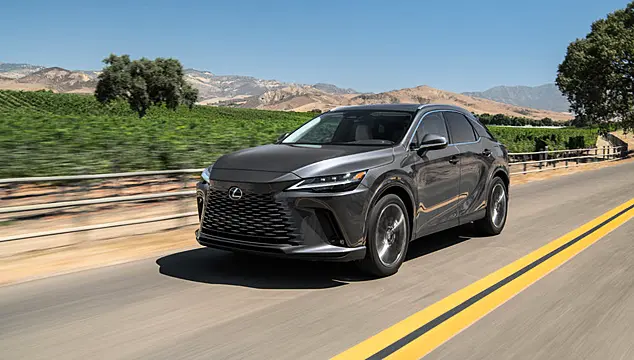When Lexus first came to market in 1989, the idea of creating a new premium brand was the motoring equivalent of planning a lunar landing. Japanese brands had earned a mainstream reputation for reliability, but competing with the likes of Mercedes and BMW seemed like a giant leap of faith.
Yet with typical Japanese focus and attention to detail, Lexus has done just that: delivering a brand that is globally regarded as an established premium player. But it took them at least a decade to persuade the public of its premium prowess.
What must infuriate its long-time executives is how in this age of electric, newcomers seem to be able to slip into the premium market without the same degree of effort. Brands like Polestar or even Tesla have not faced the long slog that Lexus did.
When pitching itself against the German brands, Lexus set to carve out a niche with a focus on comfort and refinement that bordered on a fundamentalist fixation. To this day, these are two cornerstones of the brand. Of course, being a premium player they dabbled in sporty dynamics as well, but at heart this brand’s core cars were targeting luxury-like refinement and grace at premium prices.
Alongside this was a desire to showcase the deep engineering capabilities derived from its parent, Toyota. That was exemplified in the way they embraced petrol-electric hybrid power.
Which brings us to the latest new arrival, the fifth generation of its RX SUV. First brought to market in 1998, the RX has long sought to be a direct rival to the likes of the BMW X5, Volvo XC90 or Mercedes GLE.

The pitch was simple: a road-going SUV offering premium quality fit and finish, a comfortable ride, and since 2005 the option of petrol-electric hybrid performance.
Over the last four generations, the styling and size has changed, but the fundamental approach has remained the same. Now in its fifth generation, there are clear signs that, while often regarded as an also-ran, this SUV has matured into a top-level contender in its class.
Cleaner lines
For a start, the styling is a cleaner take on previous over-worked iterations. Up front the dominant spindle grille still makes a bold statement, but the bonnet line comes further down the front nose. The end result is subtle when considered against the faux prison fences that adorn the front of BMW SUVs these days.
Round the back is the clearest example of the cleaner design lines, with sleek uncluttered styling that’s somewhat reminiscent of the Range Rover look, set off by a light bar that runs right across the rear.
While the RX’s overall length hasn’t greatly changed, Lexus engineers have pushed the wheels further to the edges, reducing overhangs at either end and giving the car a more assured stance on the road.
And it’s on the road that this SUV’s maturity really starts to show. Sticking to its fundamental traits of comfort and refinement, Lexus has delivered a new RX that’s relaxing over long distances and can confidently wind its way through tight bending roads without causing the slightest discomfort to front or rear seat passengers.
Lexus has opted to keep the RX as a five-seater, which may limit its appeal to some family buyers. Yet for those who can live with this format, you get plenty of legroom. There’s certainly room in the back for two six-feet passengers, while bootspace is now 612 litres, enough to cater for four fullsize golf bags and more than capable of matching its rivals.

Up front the dash is dominated by the new touchscreen system first introduced on the smaller NX. Here you get a 14-inch touchscreen that’s intuitive, responsive and smartly laid out. A heads-up driver display is offered on the higher grade version, though it’s not quite as informative or detailed as similar systems offered by BMW, for example.
One abbreviation that constantly crops up in conversations with Lexus engineers and executives is NVH. That stands for noise, vibration and harshness and it’s the troublesome threesome that’s the bane of every premium car brand experience.
For Lexus, it means those cocooned in the cabin should be cossetted from engine and wind noise, rattles and bumps. Lexus has always mastered this art with its top end cars, matching its German rivals even when struggling with some unique traits of hybrid power, in particular the high-rev engine whine when you kick down the throttle.
High revving engine noise during heavy acceleration remains an issue with the recently launched NX, but with the RX this is largely overcome with some very impressive noise damping in the cabin. The new car’s NVH is also helped by the fact that Lexus is embracing plug-in hybrid (PHEV) power with this generation of RX.
Plug-in popularity
PHEVs are so popular right now that Lexus Ireland isn’t bothering to bring in the entry-level RX350 hybrid and instead the mainstay version will be the RX450h+ plug-in hybrid all-wheel drive. This promises an estimated 65km or so in full electric power courtesy of an additional underfloor battery pack with a net capacity of 18.1kWh. Once depleted the new RX runs as a hybrid, taking power from a 2.5-litre four-cylinder petrol engine up front and an electric motor powered from a battery pack under the rear seats.
The end result is a large family SUV that puts out 309hp, delivers 0-100km/h performance in 6.5 seconds while boasting an estimated official fuel economy of 1.2 l/100km (196mpg) with emissions of less than 24g/km.
In our test run we managed to achieve a credible 47km on full electric power running at motorway speeds, which does suggest you could hit the 60km figure when driving on urban or suburban routes.
While the RX is quite quick, this is not a sports SUV and while the handling and ride is firm enough to hold its own when you push it on, the real driving trait of the RX is refined comfort. In this regard the new generation delivers on its promise.

There is always a trade-off when it comes to comfort and handling dynamics, but Lexus has seemingly got the recipe right. The steering is crisp, there’s very little bodyroll, but it never feels taut. It may not be as dynamic as some performance SUVs, but it never pretends to be either.
A motoring colleague suggested one improvement: Lexus could drop from the standard 21-inch alloys on the new car to 20-inches, delivering a slightly more subtle ride without sacrificing looks or driving dynamics. It would seem like a smart suggestion.
When cars landing in Ireland at the end of this year, pricing starts at a heady €87,330 for the Luxury version, but for that you get a raft of safety equipment as standard. Move up to the Premium version and the price rises to €95,700. For the extra spend you get features like adaptive variable suspension that could prove useful if you are regularly on bad roads, along with a 21-speaker Mark Levinson stereo system and a heads-up display.

While there have been significant improvements over the five generations of this car, at the launch event we had a useful reminder of just how good the original RX was, by driving a 1998 RX300 back-to-back with the latest generation. With just 120,000 miles on the clock, the ‘98 car’s supple suspension and overall refinement was testament to how well put together the first wave of Lexus vehicles were, as the Japanese brand worked day and night to meet – and ideally succeed - the standards it believed were set by the German luxury brands.
The latest iteration seems a little firmer in its ride, but its substantially bigger and adapts to the latest trends in technology, both in terms of powering the car and operating the in-car controls.
In recent years Lexus seemed to lag behind its rivals, foregoing all that hard work of early years and lacking a coherent strategy in the face of a fleet of rivals. Thankfully it has started to rediscover its mojo, with the new NX and RX confirming that the brand is back on track and ready for the electric revolution. Next up will be the fully-electric RZ crossover, due to land in Ireland next year.
The premium market may be getting crowded these days, but thanks to hitting the sweetest spot of the market right now – premium plug-in hybrid crossovers – with this new RX, Lexus is well able to carve out a significant slice of the action for itself.







